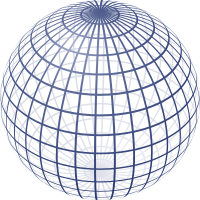
Photo from wikipedia
Let $G$ be a split real connected Lie group with finite center. In the first part of the paper we define and study formal elementary spherical functions. They are formal… Click to show full abstract
Let $G$ be a split real connected Lie group with finite center. In the first part of the paper we define and study formal elementary spherical functions. They are formal power series analogues of elementary spherical functions on $G$ in which the role of the quasi-simple admissible $G$-representations is replaced by Verma modules. For generic highest weight we express the formal elementary spherical functions in terms of Harish-Chandra series and integrate them to spherical functions on the regular part of $G$. We show that they produce eigenstates for spin versions of quantum hyperbolic Calogero-Moser systems. In the second part of the paper we define and study special subclasses of global and formal elementary spherical functions, which we call global and formal $N$-point spherical functions. Formal $N$-point spherical functions arise as limits of correlation functions for boundary Wess-Zumino-Witten conformal field theory on the cylinder when the position variables tend to infinity. We construct global $N$-point spherical functions in terms of compositions of equivariant differential intertwiners associated with principal series representations, and express them in terms of Eisenstein integrals. We show that the eigenstates of the spin quantum Calogero-Moser system associated to $N$-point spherical functions are also common eigenfunctions of a commuting family of first-order differential operators, which we call asymptotic boundary Knizhnik-Zamolodchikov-Bernard operators. These operators are explicitly given in terms of $\theta$-folded classical dynamical $r$-matrices and associated dynamical $k$-matrices.
Journal Title: Inventiones mathematicae
Year Published: 2022
Link to full text (if available)
Share on Social Media: Sign Up to like & get
recommendations!